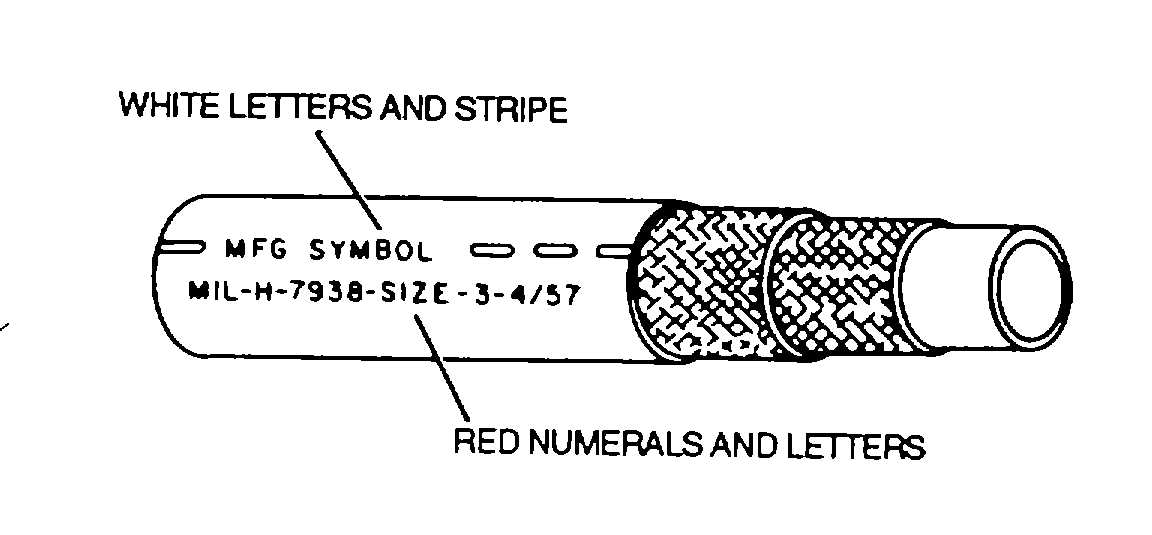TM 1-1500-204-23-2
Figure 4-35. Nonself-Sealing, Aromatic and Heat-Resistant Hose, MIL-H-6000
Figure 4-36. Flame Aromatic, and Oil-Resistant
Hose MIL-H-7938
NOTE
Whenever operating pressure of a hose as-
sembly is unknown, it will be assumed to be
1500 psi or greater
(a) Below30psi. For hose assemblies used
as vents and hose assemblies which operate below 30
psi, excessive wire damage as described herein will not
apply. Replacement of these assemblies will be at the
discretion of the local inspector/mechanic using good
shop practice and experience.
(b) Below 500 psi. For hose assemblies
which operate below 500 psi, excessive wire damage
consists of four or more broken wires In a single plait,
12 or more broken wires per assembly or per lineal foot
whenever assemblies exceed 12 inches in length.
(c) Above 500 psi. For hose assemblies
which operate at 500 psi and above, excessive wire
damage consists of two or more broken wires In a single
plait, two or more adjacent wires, one or more broken
wires in an area where kinking is suspected, six or more
broken wires per assembly or per lineal foot whenever
assemblies exceed 12 inches. Crossed reinforcing or
random broken wires are not causes for rejection.
(5) Leakage. Hose assemblies will be replaced
when leakage occurs with hydraulic pressure applied.
(6) Static leakage. With no pressure applied,
leakage exceeding one drop per hour will be cause for
replacement of the assembly.
(7) Abrasion, kinking, distortion, bulging, col-
lapse, or sharp bending. Any evidence of these con-
ditions will require replacement of hose assemblies
NOTE
Hoses need to be changed for abrasion only
If the metal reinforcement is exposed (this
note does not apply to braided wire covered
hoses).
(8) Internal damage. Inspect internal restric-
tin due to collapse, wire braid puncture, or other
damage by one of the following methods.
4-37



